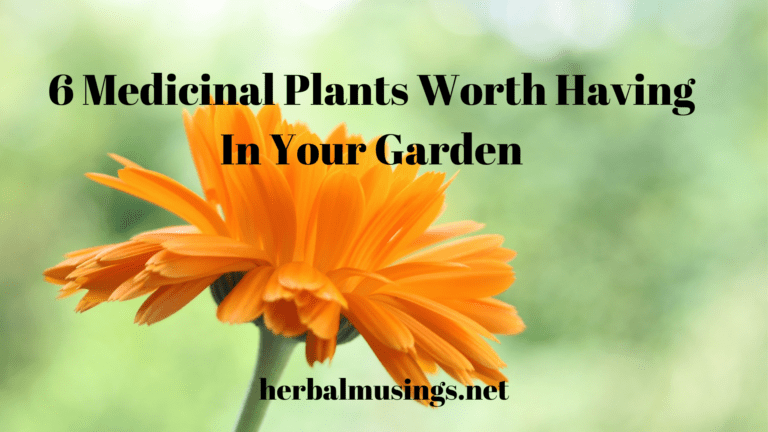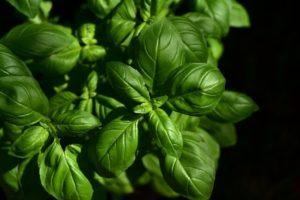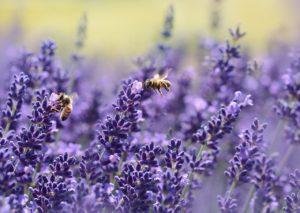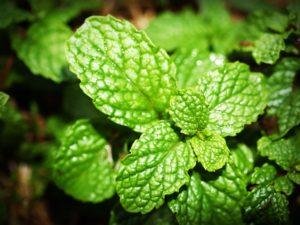
I think the best garden one can have is a medicinal garden. There’s something comforting and reassuring knowing that the medicines you need are just a few steps away. The following plants are useful not only as medicinals but also in culinary dishes. It’s a win-win situation! Cooking with herbs you’ve grown and dried is a very satisfying experience.
Medicinal Herbs
Basil
Basil (Ocimum basilicum) is related to mints belonging to the Lamiaceae family. This herb is sweet, slightly minty and slightly peppery. It lends itself to a variety of culinary uses.
This is a hardy plant and grows in a vast range of climates in slightly sunny to relatively sunny areas, with loamy to clayish well-drained soil. Basil is easy to propagate by stem cuttings. It is sensitive to cold and will grow as an annual in regions that frost during the winter.
Use basil in your cooking to assist in combating common viruses like colds, flu, and the herpes family of viruses. Basil settles the stomach and improves appetite. It’s a natural insect repellent and a natural disinfectant. Taken as a tea helps to promote the flow of mother’s milk. Basil tea reduces fever by cooling the body, helps with rheumatoid arthritis, inflammatory bowel conditions, eases muscle spasms and relaxes blood vessels. Used as a skin wash this herb fights fungus infections.
.
Lavender
Lavender (Lavandula angustifolia) also belongs to the mint family Lamiaceae. For culinary uses lavender is used in salad dressings, honey, sauces, beverages, various teas, and as a flavoring spice for a number of other cultural dishes.
Lavender is a perennial and grows in sunny areas. Run your hand over this plant and you’ll release the wonderful aroma that is so calming and soothing.
This helpful herb soothes stress and anxiety, induces sleep, aids in digestion, heals wounds and provides pain relief. This is just a few things lavender is helpful for.
Lavender is very popular for soothing stress and anxiety, just inhaling the sweet scent can be enough to relieve stress and anxiety. Lavender tea is another way to soothe body and mind as the antioxidant properties impact the endocrine system lowering the levels of stress hormones.
This is a natural go to for sleep issues. If you struggle with sleep issues, this is the herb for you! Steeping lavender flowers in a tea is a wonderful, soothing way to induce sleep. The compounds in lavender tea impact the nervous system, clearing the mind of negative thoughts and clutter.
Another way to relieve stress and assist with sleep is to use a lavender mist spray. This mist is sprayed on bed sheets, pillowcases even yourself to help ease you into sleep.
Lavender has antiseptic and antibacterial properties and when applied to wounds cleans and heals them quickly. A tea made from the flowers and cooled is applied to burns, wounds and abrasions. Massage with lavender oil at tender trigger points to reduce the pain and tension of fibromyalgia. Lavender oil massaged into the skin relieves all types of pain: arthritis, sore muscles, and nerve pain.
Lemon balm
Lemon balm (Melissa officinalis) is in the mint family, Lamiaceae. It is often grown in herb gardens to attract bees which help pollinate the rest of the garden. The plant grows up to two feet and has light yellow flowers that grow where the leaves meet the stem. The leaves are similar in shape to mint leaves and have a tart, sweet smell like lemons.
Lemon balm leaves treat insomnia, nervousness, anxiety, gastrointestinal complaints, menstrual cramps, heart palpitations and urinary spasms. Drink lemon balm as a tea or a tincture. A tincture of 5-10 drops 2x a day for a chronic condition works well.
Peppermint
Peppermint (Mentha piperita) a perennial, is part of the mint family, Lamiaceae. They are vigorous perennials that thrive in light moist soil with good drainage. If you don’t want them to spread plant them in the ground in a container with the bottom cut off.
The anti-inflammatory nature of peppermint can reduce blood pressure and body temperature and allow you to unwind and relax letting your cares melt away. Peppermint tea helps relieve the symptoms of cold, nausea, vomiting, fevers and allergies. It assists in having a healthy digestive tract, including the stomach, liver, gall bladder, and intestines.
Calendula
Coneflower
Coneflower (Echinacea angustifolia) is an herbaceous perennial. Plant in full sun, this plant grows 3-4’ tall. I use it as a backdrop in my butterfly garden. I started with 2 plants a few years ago and now have probably 30 in our butterfly garden. Coneflower is a hardy plant that withstands drought, disease and insect infestations. The plants bloom between June and October. Harvest the flowers when they are in full bloom but only harvest the roots in the fall of 3rd year plants. Only take 1/3 of the roots to harvest so the plant grows next year.





